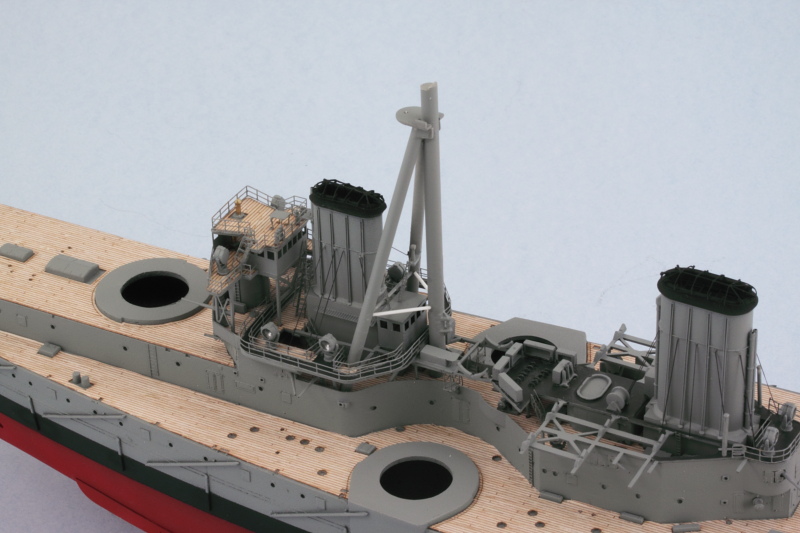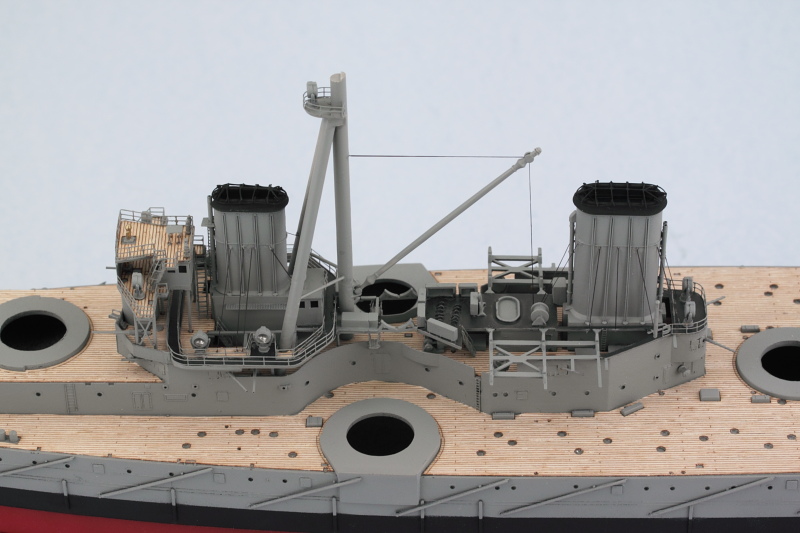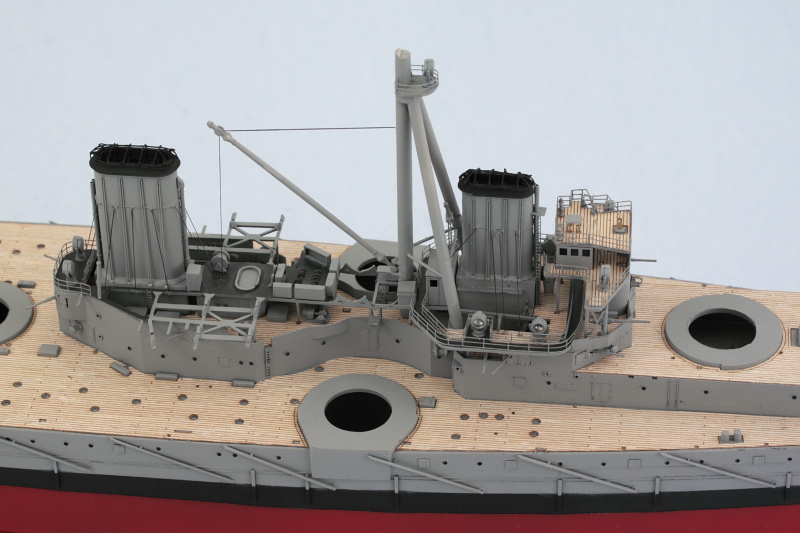WIP 08-31-2014
Posted: Sat Oct 01, 2022 7:56 pm
I started in on the masts with the foundation of the tripod elements needing attention first. I left off the coaling derrick arm to allow more flexibility in its positioning for later and also to keep it out of the way of trying to install its host leg into position. Trumpeter designed it with a notch near the base that interacts with the boat deck level to install it in the correct position and having the derrick in place would make that much more frustrating than it should be. I airbrushed all three legs after adding in the little platforms to the two front legs and the searchlight platform to the rear leg. All three legs were installed into the super deck and then aligned where they all meet at the top. I left off the little PE support piece, PE33A, for the searchlight platform's underside until after things had set on the three legs to avoid the possibility of it getting knocked loose and lost to the carpet monster.
One detail that I noticed in the Kagero 3D book that was missing were the three triangular braces between the legs, so I used some 0.6mm styrene rod to recreate those. The front brace went in first, followed by the PE ladders for the little elevated platforms, then the rear braces were added. I also added the last two funnel stay lines that connected to the tripod legs to round things out there.

Once all that had set up, I hand painted the braces and added the searchlight and railing to the platform. The derrick came next and I had to decide whether to position it as Trumpeter wanted it or how the Kagero book shows it in the 'stowed' position. The Kagero position would complicate a lot of things including the aft conning tower, the way the signal flag lines would be rigged, and also possibly interfere with the boats...so I decided simpler is best and put it in the Trumpeter designed angle. May not be 100% accurate but it's something I can live with.

I also added in the access ladder, PE48A, for the front funnel that reaches from the super deck to the weather station platform. Had I known how tight that space would get at this stage, I would've installed it sooner but I had overlooked it in the instructions under Step 30.

Next up will be the complex task of working on the crow's nest platform with all of its PE parts and the upper portions of the front masts and cross arms. Since those are going to be replaced with brass rod to take the strain of rigging, I've got to devote some careful study to that and decide how best to tackle.
One detail that I noticed in the Kagero 3D book that was missing were the three triangular braces between the legs, so I used some 0.6mm styrene rod to recreate those. The front brace went in first, followed by the PE ladders for the little elevated platforms, then the rear braces were added. I also added the last two funnel stay lines that connected to the tripod legs to round things out there.
Once all that had set up, I hand painted the braces and added the searchlight and railing to the platform. The derrick came next and I had to decide whether to position it as Trumpeter wanted it or how the Kagero book shows it in the 'stowed' position. The Kagero position would complicate a lot of things including the aft conning tower, the way the signal flag lines would be rigged, and also possibly interfere with the boats...so I decided simpler is best and put it in the Trumpeter designed angle. May not be 100% accurate but it's something I can live with.
I also added in the access ladder, PE48A, for the front funnel that reaches from the super deck to the weather station platform. Had I known how tight that space would get at this stage, I would've installed it sooner but I had overlooked it in the instructions under Step 30.
Next up will be the complex task of working on the crow's nest platform with all of its PE parts and the upper portions of the front masts and cross arms. Since those are going to be replaced with brass rod to take the strain of rigging, I've got to devote some careful study to that and decide how best to tackle.